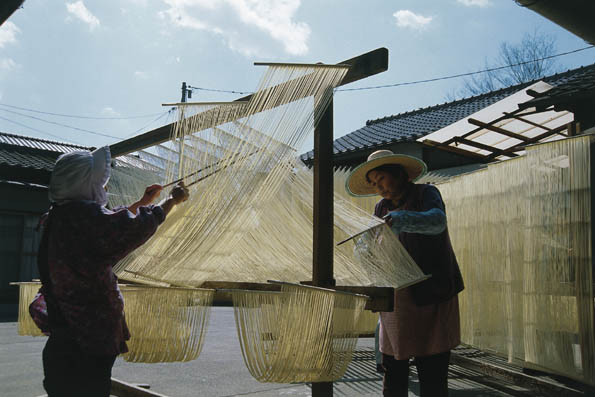
by Elizabeth Andoh | Jul 5, 2025 | Kitchen Culture
Hand-Stretched Noodles 手延べ素麺 TÉNOBÉ SŌMEN As the heat and humidity of summer settles in, appetites begin to wane. That’s when chilled sōmen noodles provide solace. Indeed, sōmen have been refreshing heat-weary Japanese since at least the 8th century. Sōmen noodles...
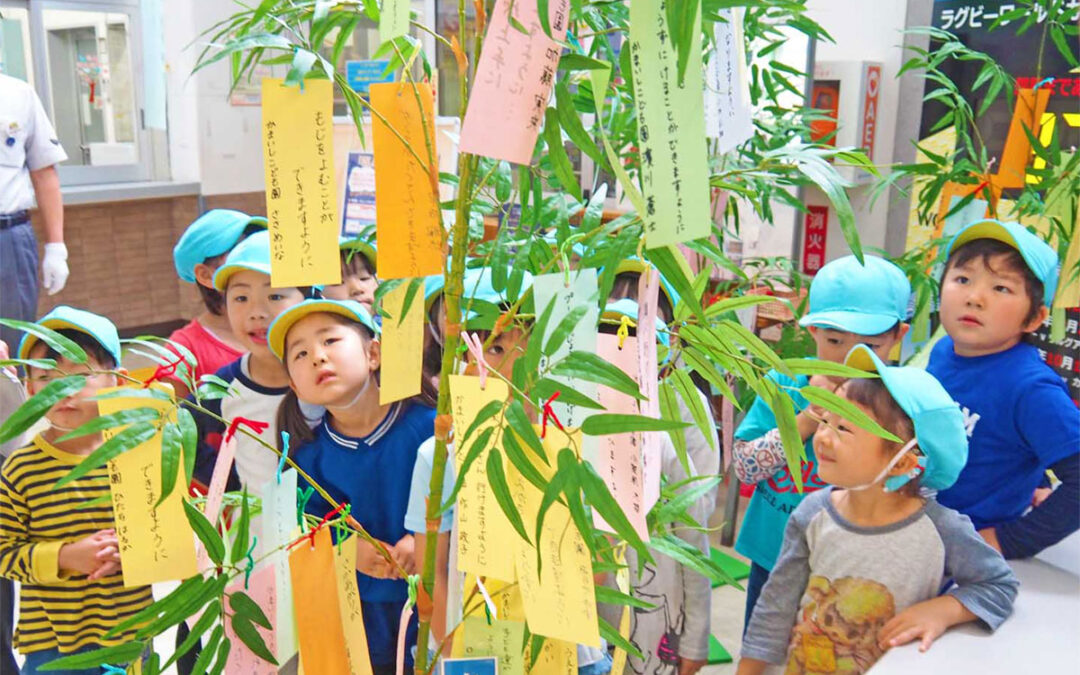
by Elizabeth Andoh | Jul 5, 2025 | Kitchen PROJECTS
The Tale of TANABATA 七夕伝説 The Tale of Tanabata, which originated in China, has been told in Japan for at least 1200 years. The Japanese version tells the story of a cowherd (Kengyū in some versions, Hikoboshi in others, as the star Altair), and the Weaving Princess...
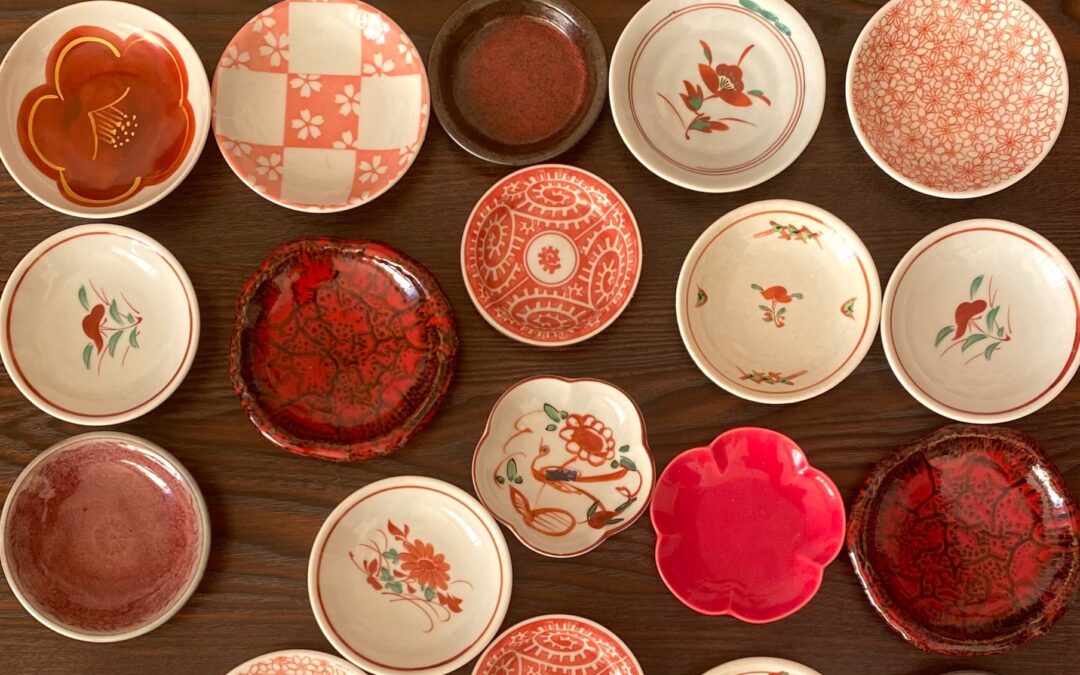
by Elizabeth Andoh | Jun 13, 2025 | Kitchen PROJECTS
MAMÉ-ZARA FunCollecting and Using Small Plates Part of the fun of collecting dishes and other tabletop accessories, is to assemble wide-ranging variations within a category. With mamé-zara, one way to do this is focus on a color scheme such as red and then collect as...
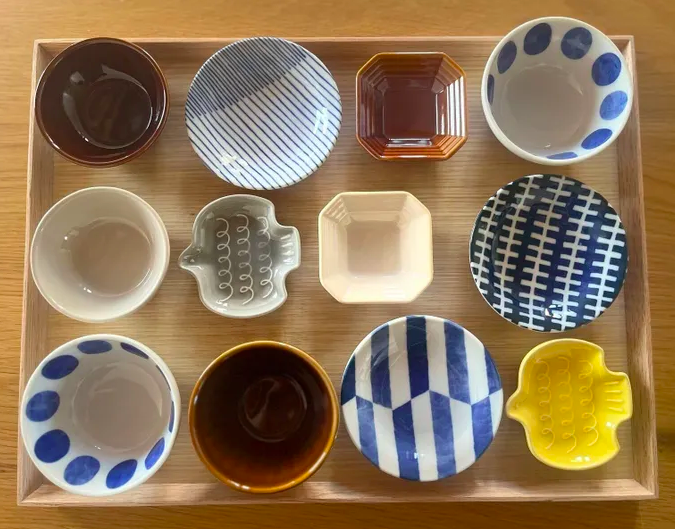
by Elizabeth Andoh | Jun 13, 2025 | Kitchen Culture
MAMÉ-ZARA 豆皿 (Small Plates) One of the distinctive features of Japanese food arrangement is the use of many small plates and bowls in serving a meal. These vessels are typically varied in appearance (color, shape, design) and generally hold small portions of food...
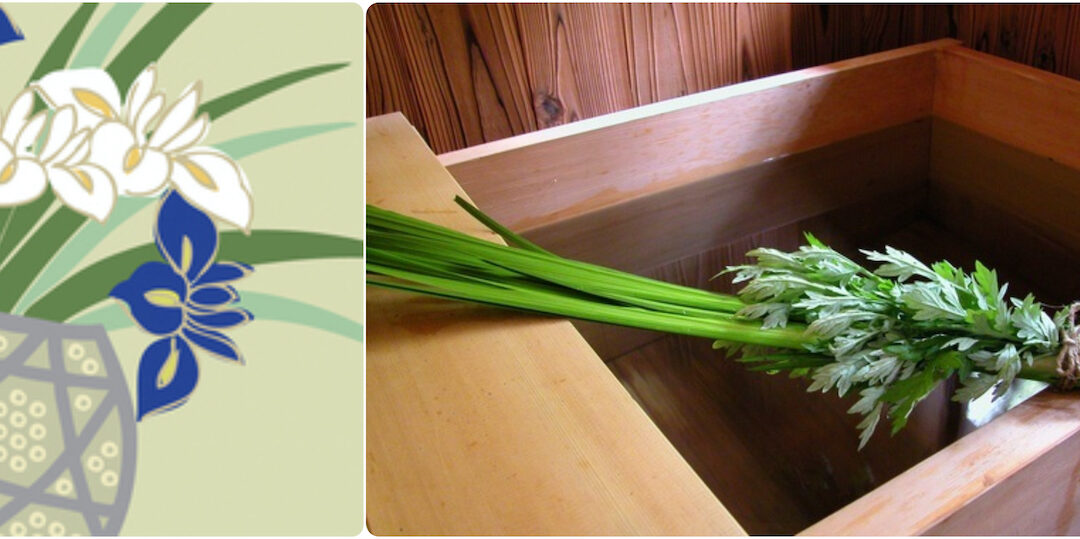
by Elizabeth Andoh | May 3, 2025 | Kitchen Culture
SHŌBU: 尚武・勝負・菖蒲 In Japanese, the words for martial spirit (shōbu, 尚武), victory (shōbu, 勝負), and a reed that is a botanical relative of the iris flower (shōbu 菖蒲) make a fortuitous pun. Throughout Japan, during Golden Week, fragrant bunches of shōbu (iris reeds), are...
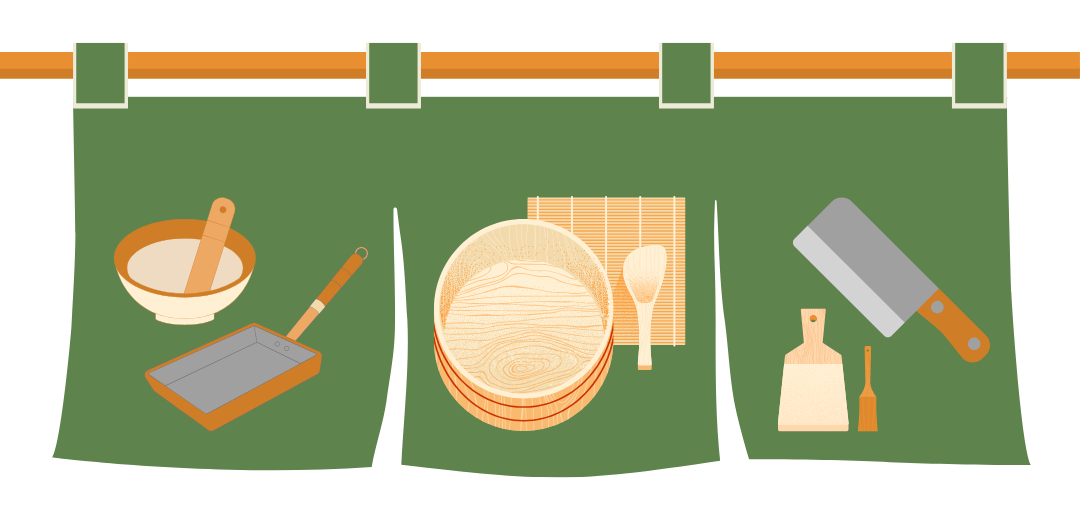
by Elizabeth Andoh | Apr 17, 2025 | Kitchen Culture
In Japan, April is the time for new beginnings — the start of a new school year, a new fiscal year, and changes to many established programs on TV, radio and other media outlets. In tune with this custom, I’ve made some changes at A Taste of Culture this...
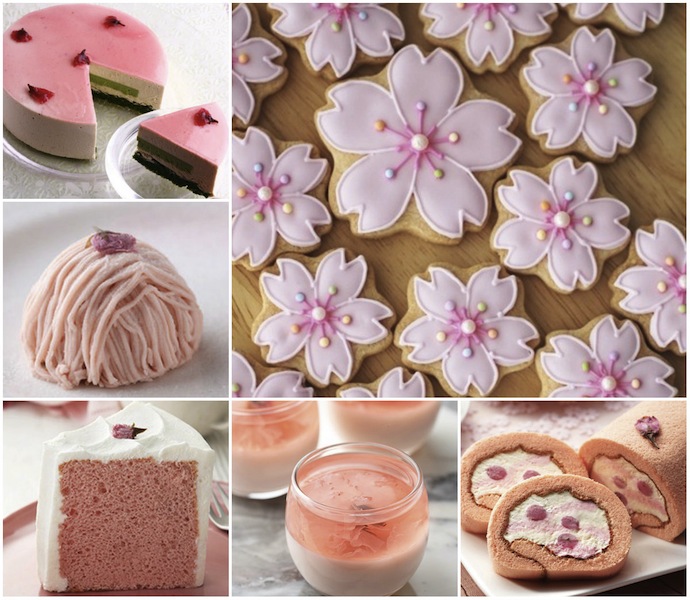
by Elizabeth Andoh | Mar 25, 2025 | Kitchen PROJECTS, Spring
洋菓子・yōgashiWestern-Style Confectionery Japan’s food culture includes ingredients, techniques and dishes that have been adopted and/or adapted from non-Japanese sources. One large category is confectionery. Earliest influences were from the Portuguese in the...
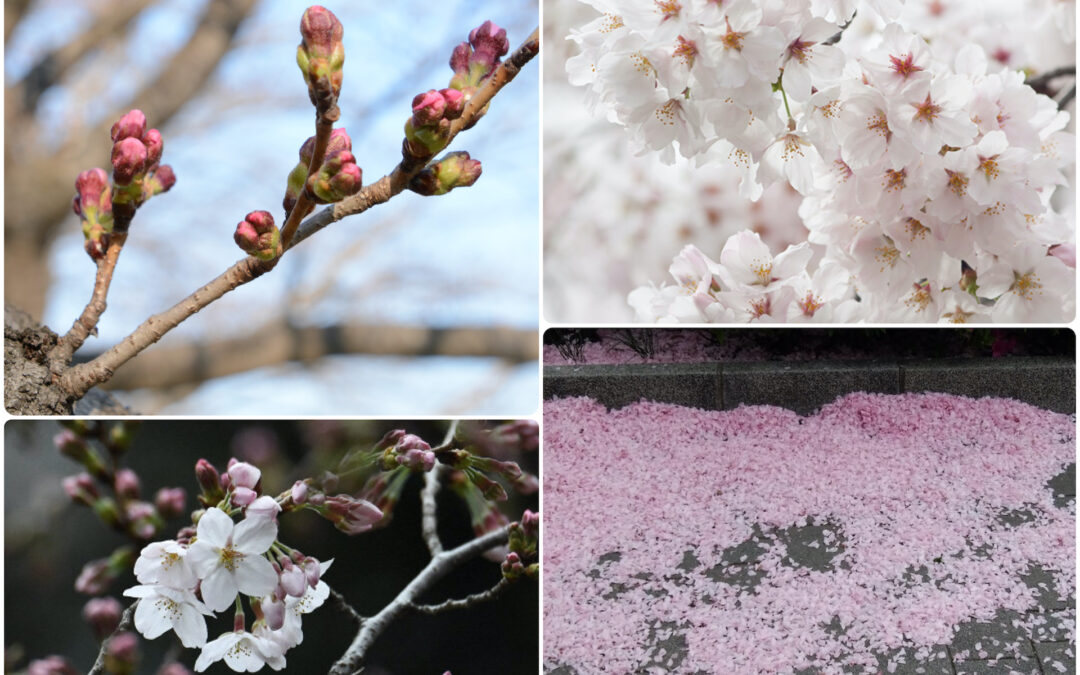
by Elizabeth Andoh | Mar 25, 2025 | Kitchen Culture, Spring
The Japanese take great pleasure in celebrating the seasons and SAKURA (cherry blossoms) are emblematic of spring. From the time buds (tsubomi 蕾) first appear to the official pronouncement of blooming (kaika 開花) it is often less than a week. And from there to...
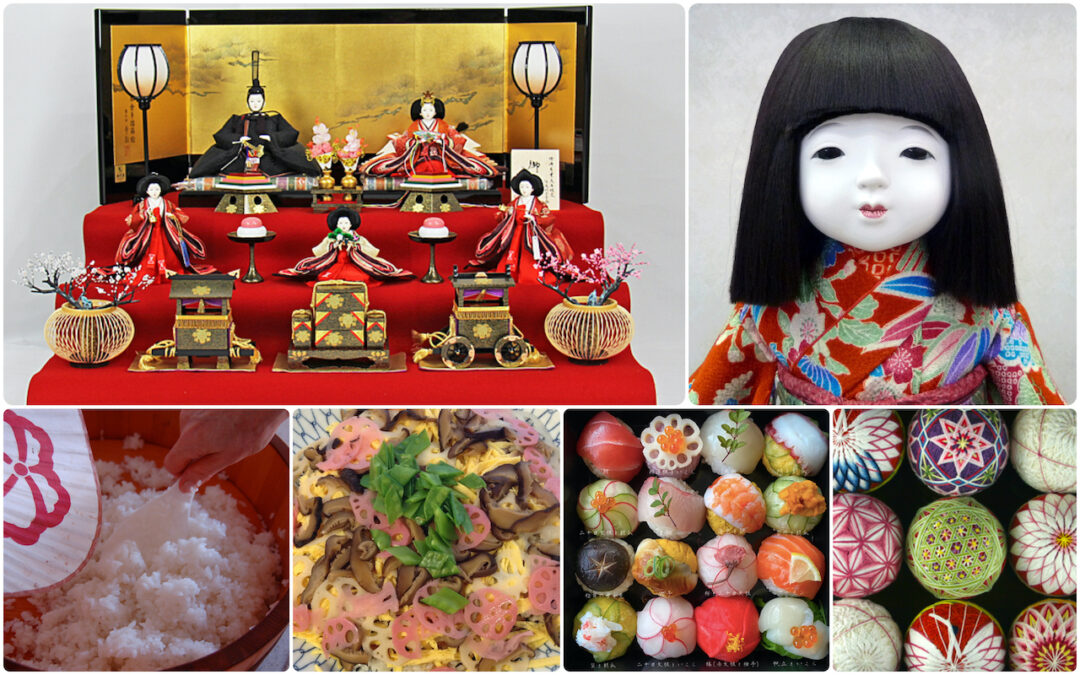
by Elizabeth Andoh | Feb 26, 2025 | Kitchen PROJECTS, Spring
This KITCHEN PROJECT features temari-zushi, bite-sized spheres of tart rice topped with various ingredients. HINA MATSURI is celebrated on March 3 and during the weeks leading up to it, and for several weeks thereafter, scattered chirashi-zushi and/or temari-zushi ...
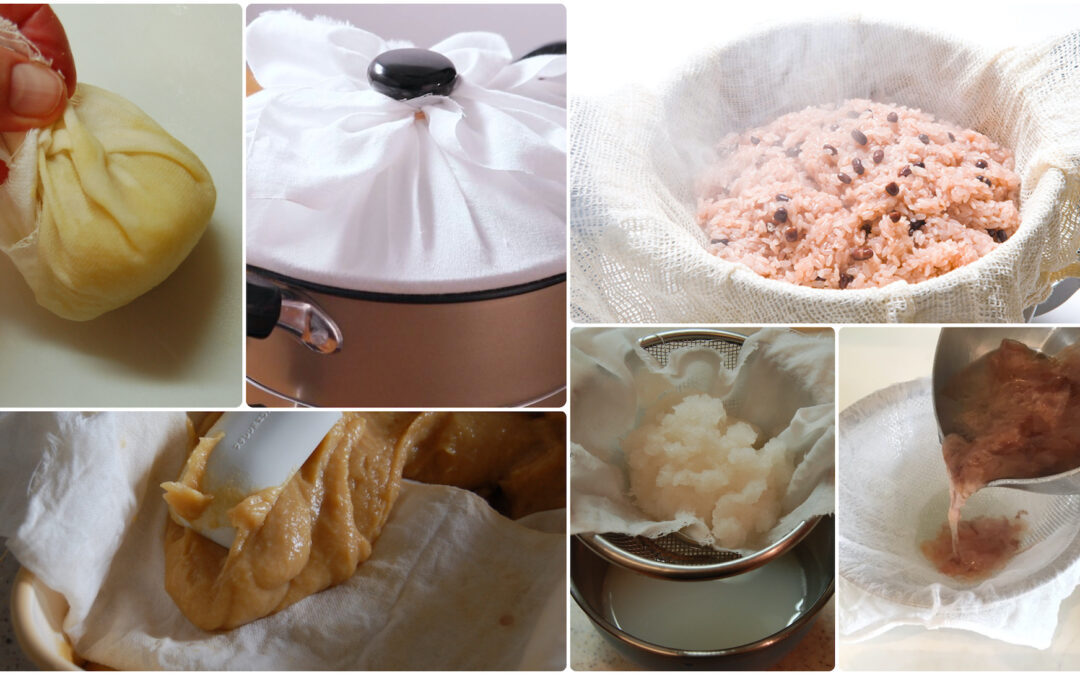
by Elizabeth Andoh | Feb 26, 2025 | Kitchen Culture, Tools & Techniques
Cloth is the work horse, and often unsung hero, of the kitchen. In the Japanese kitchen, cloth enables the cook to perform a wide range of tasks such as lining steamers, draining and straining, enveloping, and shaping. fukashi nuno 蒸し布 Cloths known as fukashi nuno 蒸し布...
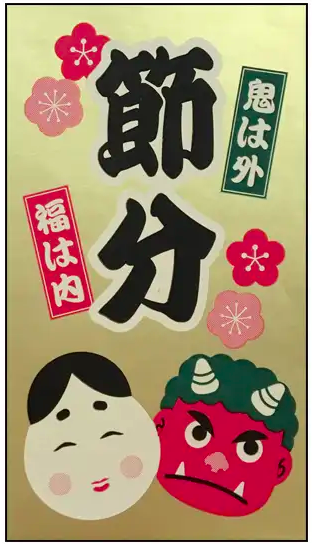
by Elizabeth Andoh | Jan 28, 2025 | Culture, Holiday, Kitchen PROJECTS, Winter
Bean-Throwing for Setsubun Mamé maki (bean-throwing for Setsubun) tosses ogres outside (with dried beans) and brings good fortune inside (with dried beans). Fuku mamé (dry-roasted “good luck” soybeans) can be black or white (beige, really). FUKU wa...
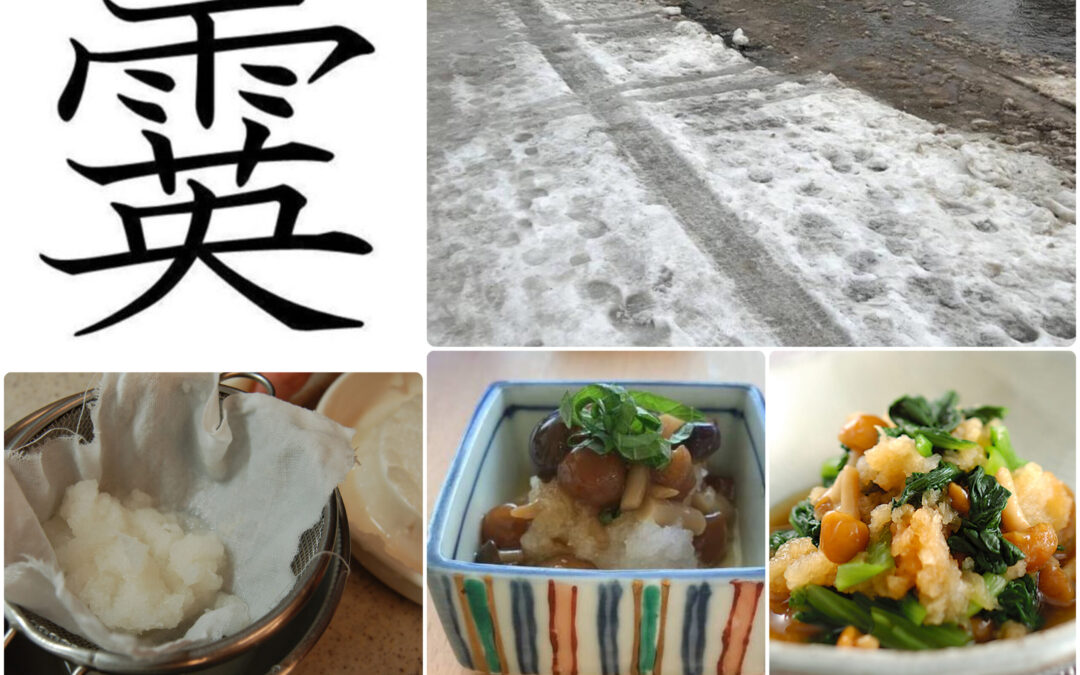
by Elizabeth Andoh | Jan 28, 2025 | Kitchen Culture, Winter
Winter weather reports predicting SLEET (mizoré), are rarely welcome news. After all, the bone-chilling mixture of rain and snow is messy under foot and creates hazerdous road conditions. But when mizoré appears on a menu, it conjurs up tasty fare. Snowy white daikon...
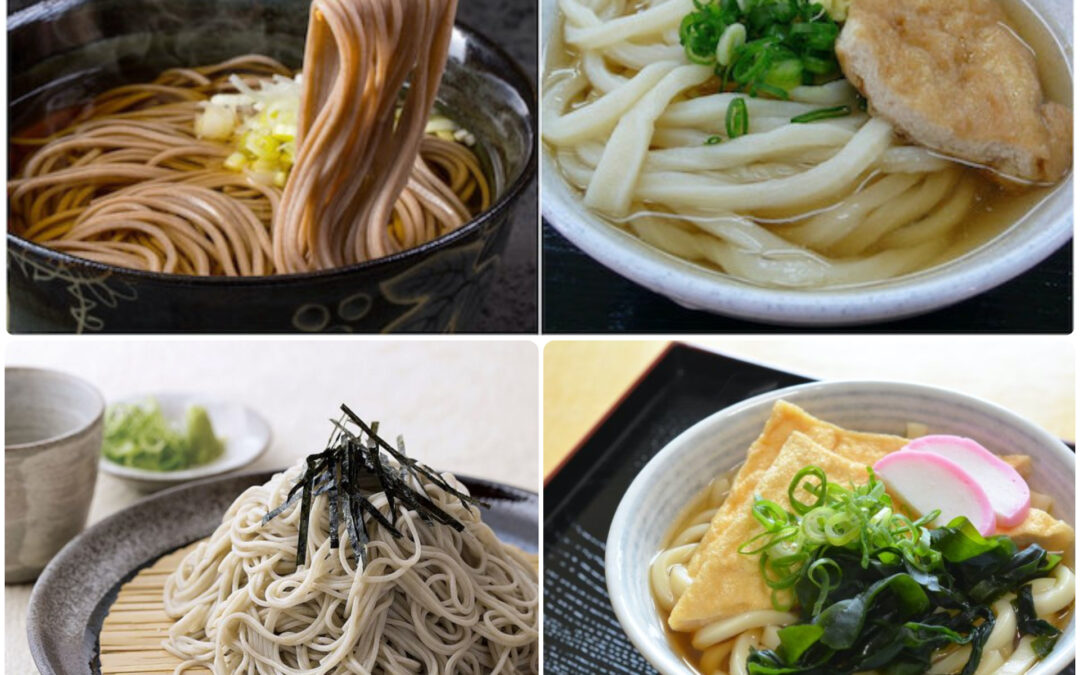
by Elizabeth Andoh | Dec 21, 2024 | Culture, Holiday, Kitchen Culture, Year-Round
Year-Passing SOBA… New Year-Welcoming UDON The Japanese bid farewell to the current year by slurping l-o-n-g noodles at midnight. Though most areas of Japan eat soba, calling the noodles toshi koshi (year-passing), those hailing from the Sanuki region eat udon....

by Elizabeth Andoh | Dec 21, 2024 | Culture, Kitchen PROJECTS
NOODLE-SLURPING Anyone who has ever spent time in Japan, or regularly eats at Japanese restaurants, knows (all too well) the sound of slurping. Noodles, for sure, but soup, tea and other liquids, too. Although noodles, soup and beverages are part of every food...
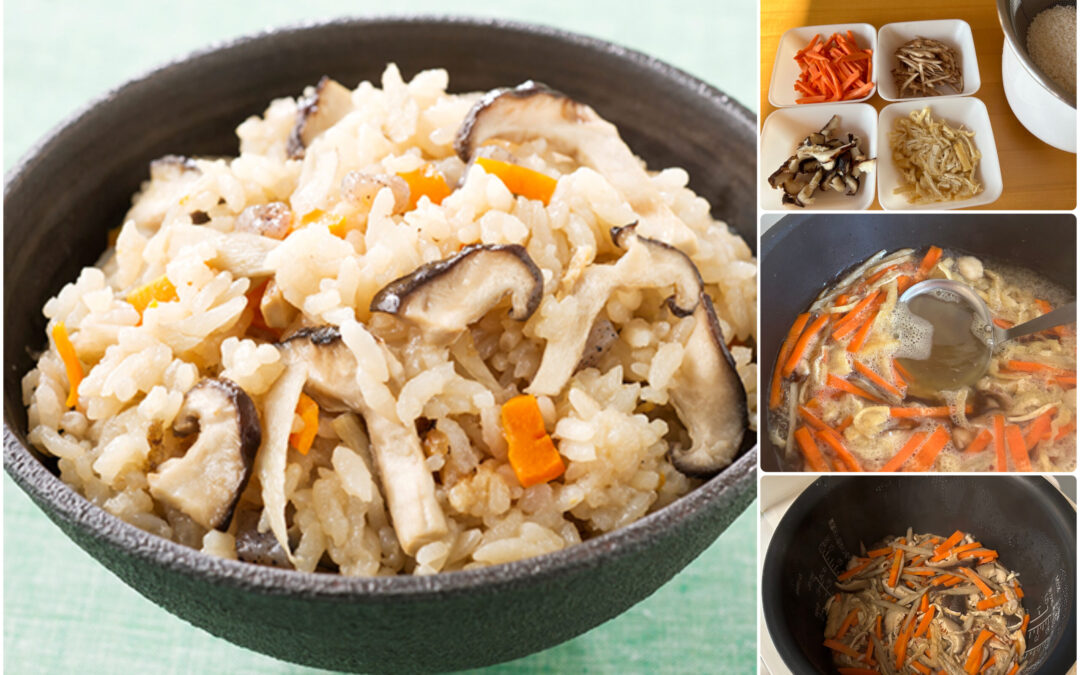
by Elizabeth Andoh | Nov 19, 2024 | Kitchen PROJECTS, Year-Round
Vegetables cooked into RiceKayaku (Takikomi) Gohan加薬 (炊き込み) ご飯 In different parts of Japan, rice that is cooked in a flavored liquid with a variety of ingredients (that went to flavoring that liquid) goes by various names. The most generic is takikomi because it...
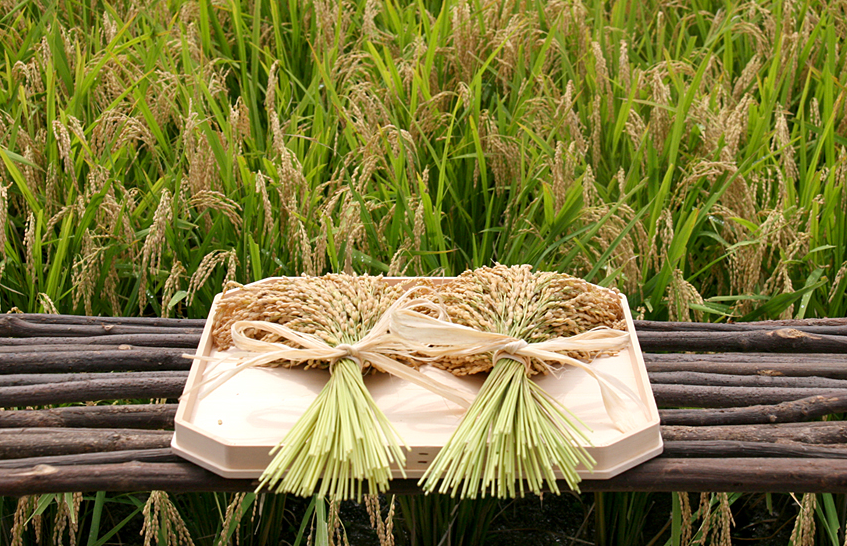
by Elizabeth Andoh | Nov 19, 2024 | Autumn, Holiday, Kitchen Culture
In Japan, rice is more than just sustenance. It holds symbolic and sacred significance. Rice yield was also a measurement of wealth during the Edo Period (1603-1868). Early records of rituals celebrating the harvest and entreating future prosperity, called nii namé...
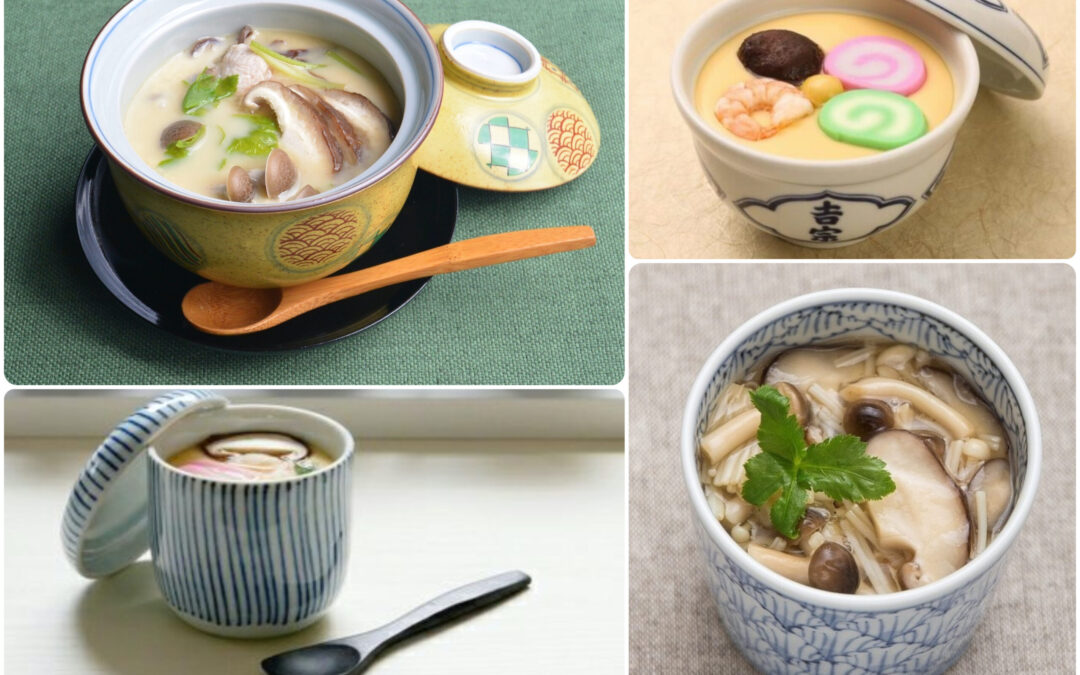
by Elizabeth Andoh | Oct 18, 2024 | Kitchen Culture, Year-Round
Silky, savory egg custards called CHAWAN MUSHI 茶碗蒸し are served in cups with a spoon. The egg and dashi mixture is delicately seasoned with mirin and light-colored soy sauce. Various tidbits such as mushrooms, ginko nuts, chicken, shrimp or kamaboko (fish sausage) can...
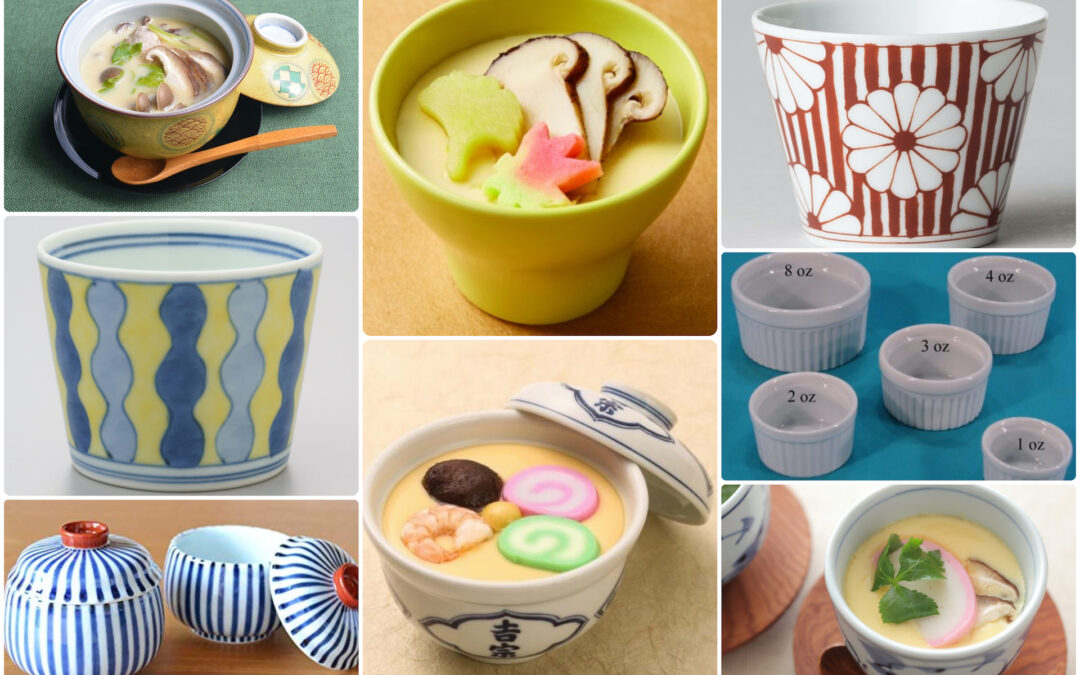
by Elizabeth Andoh | Oct 18, 2024 | Kitchen PROJECTS, Tabletop
PROJECT: Serving Steamed Foods Piping Hot This PROJECT is about serving chawan mushi, a dish that requires heatproof cups to cook the egg custards in and to bring them piping hot to table. Because Japan’s food culture places importance on the presentation of...
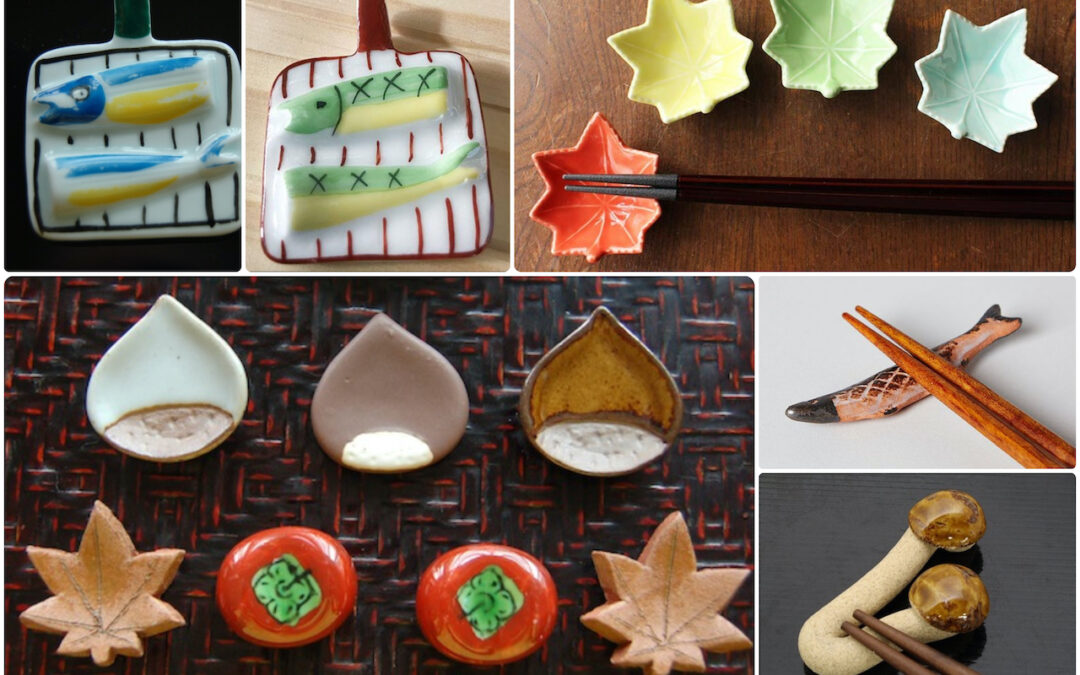
by Elizabeth Andoh | Sep 5, 2024 | Autumn, Kitchen PROJECTS, Tabletop
Setting the Table, Setting the Stage This PROJECT is about setting the table… to set the stage for autumn’s culinary pleasures. One simple and fun way to do this is by choosing fall-themed HASHI OKI (choptsick rests). Pictured above are a few of the...
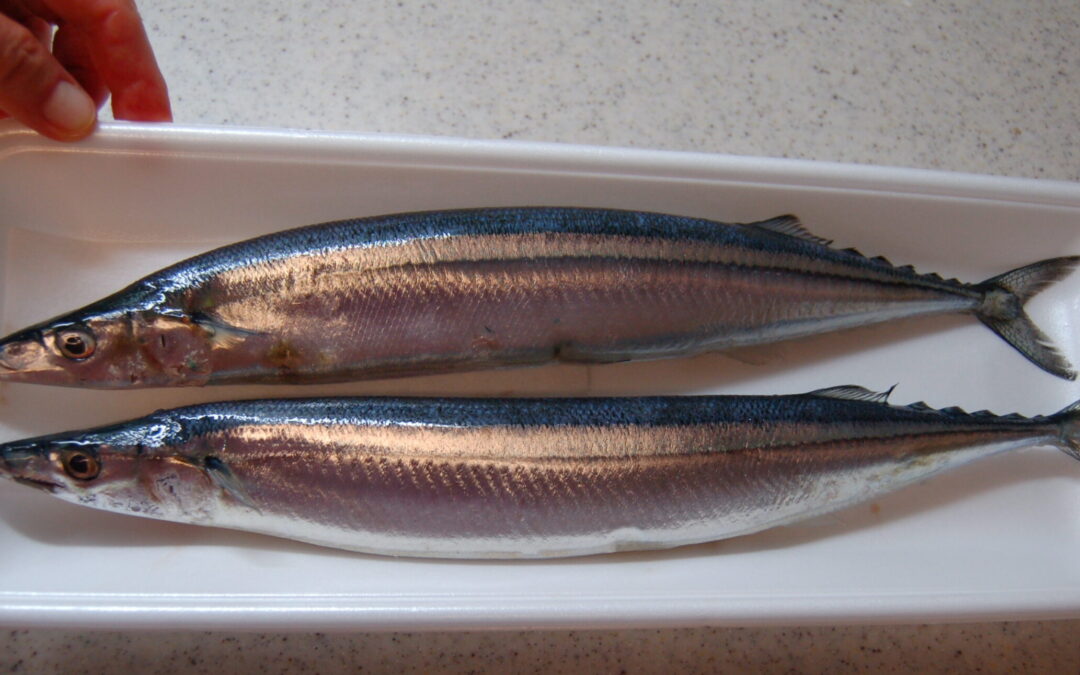
by Elizabeth Andoh | Sep 5, 2024 | Autumn, Kitchen Culture
The Japanese speak of aki no mikaku (autumnal eating pleasures). Of the many foods placed in that category, a slender, sleek, and steely-colored fish called sanma (Pacific saury; Cololabis saira 秋刀魚) has always been considered shomin no aji, or “food for the...





















